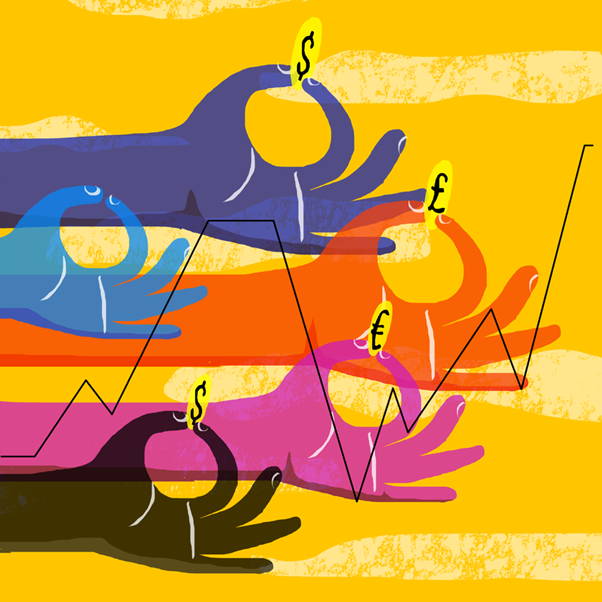The Record Date is the date set by the Company as the cut off day for deciding which shareholders are eligible for distribution of dividends in that particular cycle. It is essential to determine a record date to sort out which are the actual shareholders of the Company. It is known that dividends are essentially one of the regular benefits that are reaped by a shareholder. However, it is noteworthy that only those shareholders that are listed on the record date shall be eligible for receiving the dividends or the distribution.
Read the below mentioned FAQs to understand more about the record date and several other relative terms as well as their implications on the dividend distribution of a particular stock.

Image Source: Copyright © 2021 Kalkine Media
Summary
- Usually the ex-dividend and record dates get confused. The ex-dividend and record date are strategically placed to ensure the distribution of dividends only amongst the registered shareholders.
- What are differences between record date and the ex-dividend date and how are they inter-linked?
- Cast a glance at the different terms in trading, their minor differences and how they affect change in the entire scenario of dividend distribution.
Frequently Asked Questions
What is record date and what is its significance?
The sole purpose of the record date of a dividend is to ascertain the list of shareholders amongst whom the dividend shall be distributed. It is because only the shareholders that currently appear in the records of the company would be eligible to receive any kind of dividend. The names are determined as per the shareholders that made purchases a day prior to the ex-dividend date. This is how the names are shortlisted and the payments made accordingly.
How are ex dividend date and record date connected?
Better understood as the cut-off date for the shareholder to receive the dividend, the ex-dividend date is when the seller becomes entitled to the dividend. The record date determined by the Company is essential to understand before indulging in the buying and selling of stock dividends. The usual strategy is to set the ex-dividend date one day prior to the dividend record date.
The reason for this is the T+2 system originally used in North America. According to this, any stock trade takes two days to materialize. This means that if an investor were to buy a stock one day prior to the record date, the deal would come through a day after the record date. This would mean that the person would not be eligible to receive the dividend or distribution as they were not a shareholder, as of on the record date.
How are things different when the stock dividend is 25% or higher?
Interestingly, the rules tend to change if there is a 25% or greater value of dividend involved, which is rare as it is. In this case, the first business day that follows the payable date is considered the ex-dividend date, according to the regulation set by FINRA or the Financial Industry Regulatory Authority. This means that if you wish to reap the rewards of a shareholder, you need to make the purchase at least 1 day prior to the ex-dividend date or 2 days prior to the date of record.
What are the dissimilarities between record and ex dividend date? Explain using an example.
Not to be confused with the ex-dividend date, the record date is the date when it is determined if the particular investor is a shareholder eligible for receiving dividends and other benefits of a shareholder. Set day prior to the record date, the ex-dividend date is technically governed by the rules set by the stock exchange that the Company is a listed stock of.
Example: If A wants to buy shares in a Company called XYZ, they can do so at any time, but if they wish to become a shareholder and receive dividends for that particular term, they shall have to make the purchase before the set record date. If A is not able to seal the deal on or before the set date, they shall not be eligible for the shareholder benefits.

Image Source: Copyright © 2021 Kalkine Media
What is “trading ex”?
It means that the time for the stock to be dividend bearing for the shareholder has passed. So, if a particular stock is considered to be “trading ex”, it means that you may make the purchase, but it is not going to reap you any dividends this time around. Also, to be noted, it is seen that when a stock is “trading ex” its value tends to decrease, may be because people do not find it beneficial to invest in if they aren’t going to reap the shareholder benefits.
What is the book closure date?
There are several terms in trading which have very little difference in their meaning. The book closure date is essentially the date when no further requests about purchases shall be indulged in by the registrar. If your shares are bought before the book closure, the delivery of shares shall happen only after the book closure time period ends.
How is the dividend finally distributed?
After determining the shareholders to whom the dividends have to be dispatched to, if the shareholder’s account is linked to their bank mandate, they shall automatically receive the funds in their account. On the other hand, if the shareholder holds physical shares and their account is not linked to their bank, the cheque for the dividend funds shall be sent to their mailing address.
It is further to be noted, that the date of the payment for dividend depends upon whether it is an interim of a final dividend. In case of an interim dividend, it is mandatory to distribute the dividend within 30 days after the announcement for the same has been made. On the other hand, if the dividend in question is the final one, the payment needs to be made in 30 days after the Annually held General meeting of the Company.
 Please wait processing your request...
Please wait processing your request...